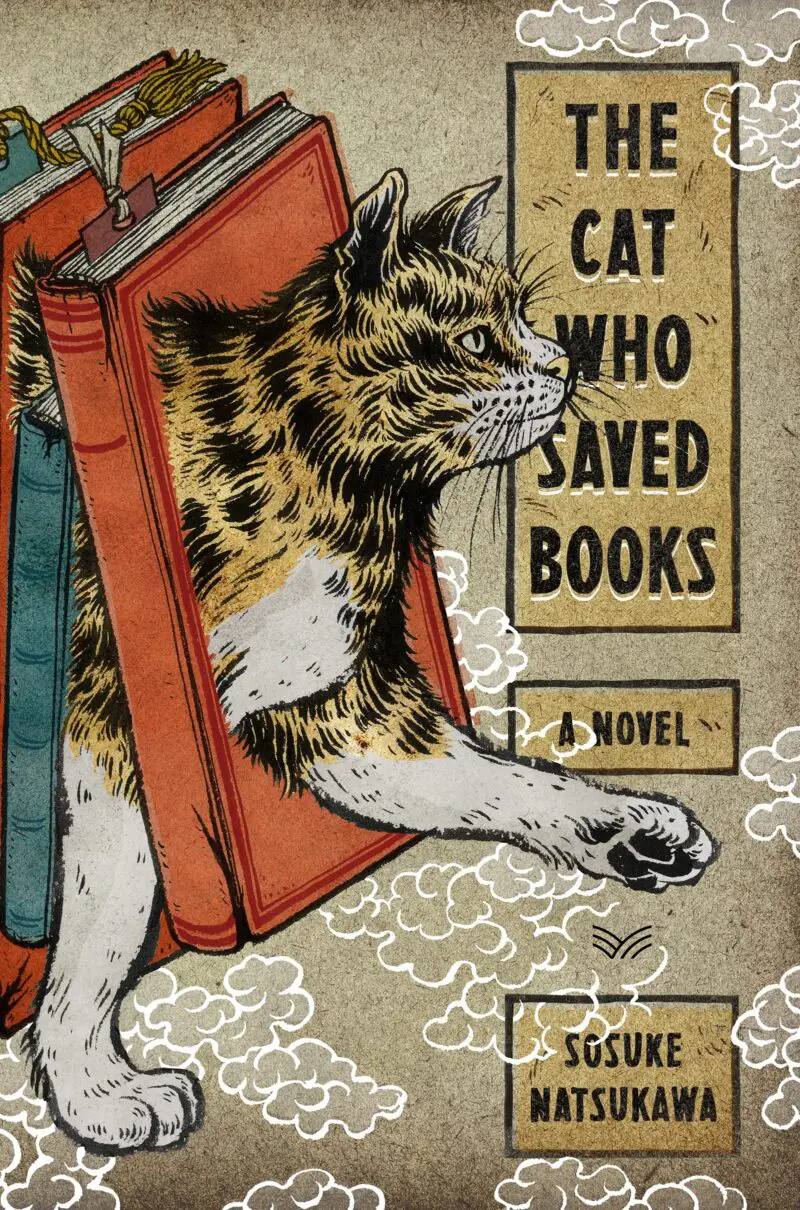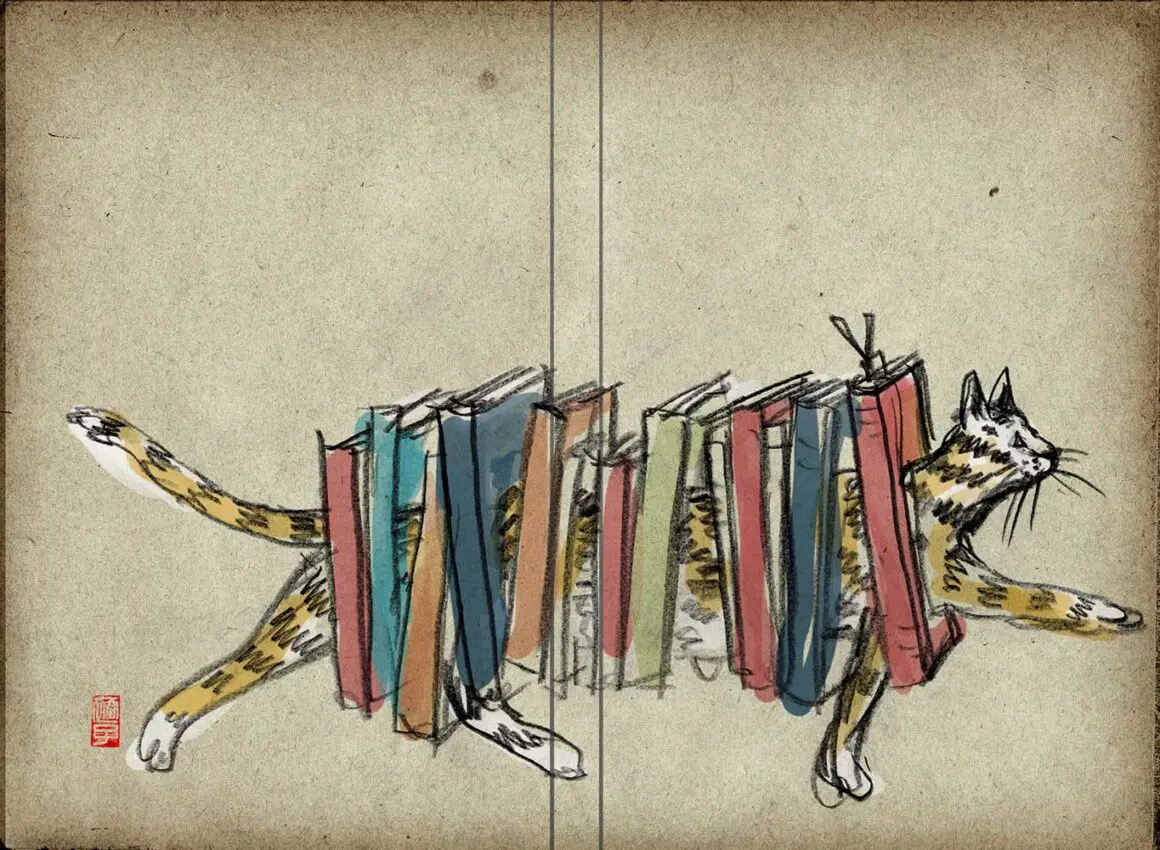
The Cat Who Saved Books by Sosuke Natsukawa begins with a death. Rintaro, the main character, has just lost his beloved grandfather. But he soon discovers even amidst his grief that his grandfather has left him with a tremendous gift…a love for books and a legacy, his small yet eclectic second-hand bookshop.
Natsuki Books is a magical place where we meet a talking orange tabby cat named Tiger that is only seen and heard by a select few. To Rintaro’s surprise, as well as the cat’s, his concerned classmate Soya can also see and hear him and decides to come along during one of the escapes into the labyrinths.
Yes, there are talking cats and magical pathways lined with bookshelves. If you’re a sucker for a book about bookshops and reading, I promise that you will love this little gem. How often does a bookshop owner or a bookseller get to save anyone?
And yet, isn’t that what booksellers do each and every day at bookshops across the world? How many times have you bought a book from a bookseller upon their recommendation and it changed your life?
Tiger Represents Independent Booksellers Everywhere
The cat comes to Rintaro for help on behalf of books to save them from imprisonment, mutilation, and a cynical publisher that only wants to publish books that are easy, cheap, and exciting. “People who truly love books, don’t treat them this way,” says Rintaro. His grandfather had always told him, “Books have tremendous power. But take care. It’s the book that holds the power, not you.”
His grandfather believed books were meant to be handled and read, not treated like decorations. “It’s not true that the more you read, the more you see of the world. No matter how much knowledge you cram into your head, unless you think with your own mind, walk with your own feet, the knowledge you acquire will never be anything more than empty and borrowed.” His grandfather had tried to encourage Rintaro that books will enhance life but should not be an excuse to shut himself away from the world.
A Labyrinth of Books
The Cat Who Saved Books can be read in one sitting, although I don’t advocate the speedreading approach that is touched on in one of the labyrinths. This is definitely one book you will have a hard time putting down and is infused with profound passages you will underline. The man in the first labyrinth thought reading many books would earn him respect from others. If he read and owned many books, he believed himself to be more powerful.
But Rintaro questions his real love for the books and soon, through the truth of his words, the bookshelves begin to disintegrate like “sandcastles” and the books fly off the shelves like “migrating birds.” The power of stories sets our imaginations and minds free.
Other labyrinths follow: the mutilation of books, editing books, and condensing them, in effect altering the very story the writer created. It reminds the reader of the world we now communicate in with texting, emails, Snapchat, etc. We know how to identify a caption by some catchy phrase or not even words, but instead emojis. Meanwhile, we are losing the art of crafting a beautiful sentence in order to get to the point more quickly.

Our ability to critically think is being questioned by the author here. And it is an important question. It is already proven that fictional stories do more to encourage critical thinking and sympathy. A story comes alive in the reader’s imagination and is free to roam, meander, and delve into so many different dimensions. Unlike passively watching television, reading engages the mind.
I loved the analogy Rintaro’s grandfather gives him, likening reading to that of climbing a mountain.
Reading isn’t only for pleasure or entertainment. Sometimes you need to examine the same lines deeply, read the same sentences over again. Sometimes you sit there, head in hands, only progressing at a painstakingly slow pace. And the result of all this hard work and careful study is that suddenly you’re there and your field of vision expands. It’s like finding a great view at the end of a long climbing trail…if you’re going to climb, make it a tall mountain. The views will be so much better.
In so many passages, this small novel reveals the passion and essence of a love for books and reading to make us feel more alive and less alone.
I found myself underlining sentences that spoke to me, often by the cat! “Books have souls,” repeated the cat softly. “A book that sits on a shelf is nothing but a bundle of paper unless it is opened, a book possessing great power or an epic story is mere scraps of paper. But a book that has been cherished and loved, filled with human thoughts, has been endowed with a soul.”
I’ve known many great souls. My bookshelves are cluttered with books that are marked up, pages are dog-eared, and spines are cracked. Like the Velveteen Rabbit at the end of its life, his fur rubbed away and missing in spots, it had been loved so well by the boy that it became real. It is so much like the stories in books that have been well-read, often many times.
Even the art of re-reading books is touched upon in the story, something many people can’t understand or would even contemplate, and yet reading a book multiple times at different stages in life can still reveal something magical and previously misunderstood by the reader. Not because the book has changed but because we have.
In my many years of handselling books at bookstores to thousands of customers, I know how fulfilling it can be to share a great story with another person and to talk about books.
The Cat Who Saved Books is in part a love story for book-lovers everywhere. “A cherished book will always have a soul.” This story has soul and heart. I’d highly recommend it!
The author Sosuke Natsukawa is a Japanese physician and novelist. The Cat Who Saved Books, an international bestseller, is set to be translated into over 20 languages around the world.
